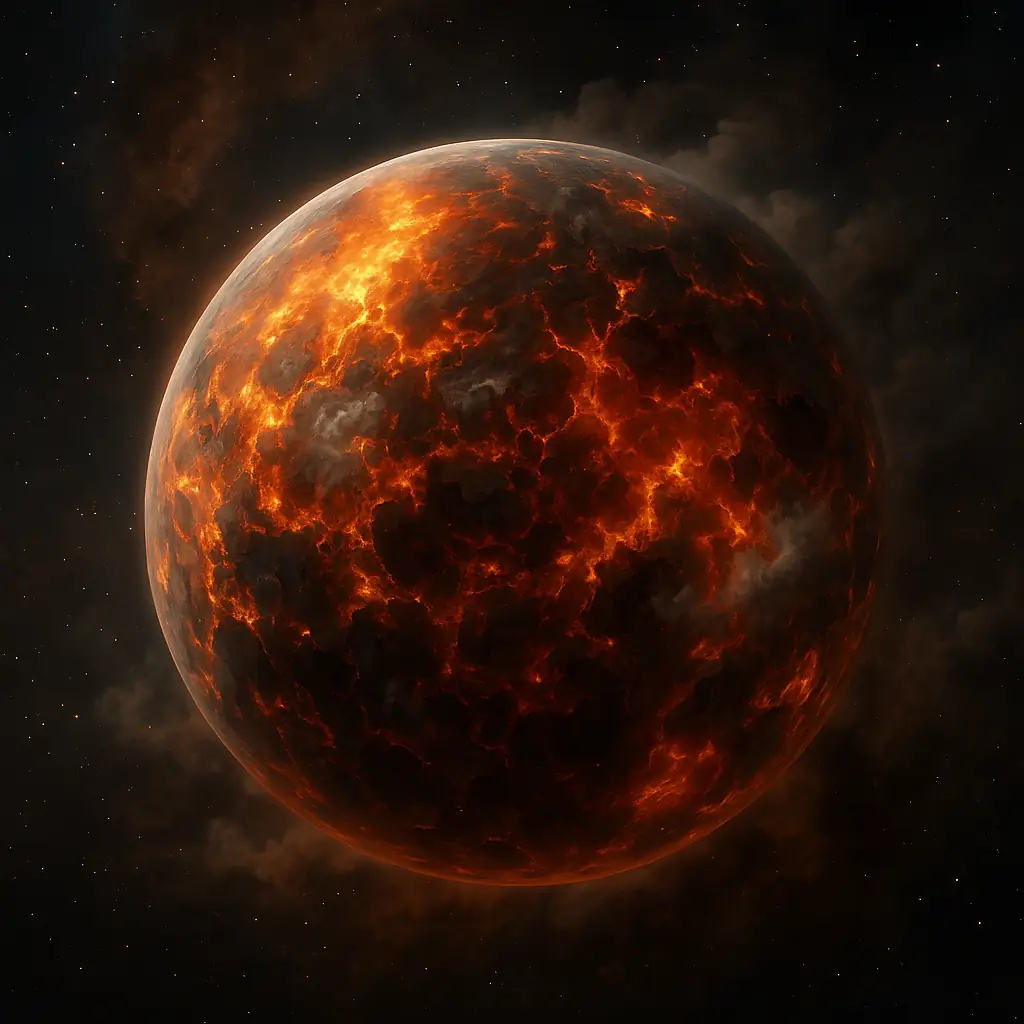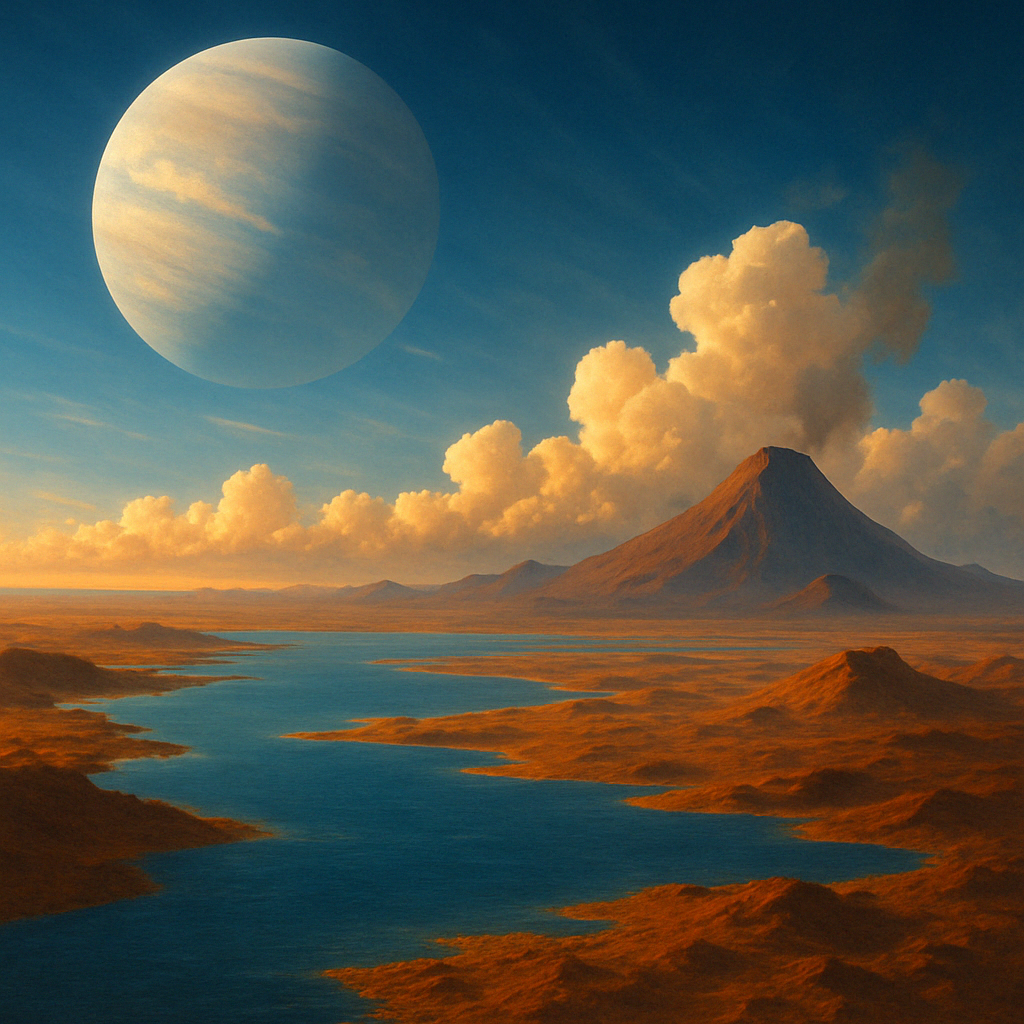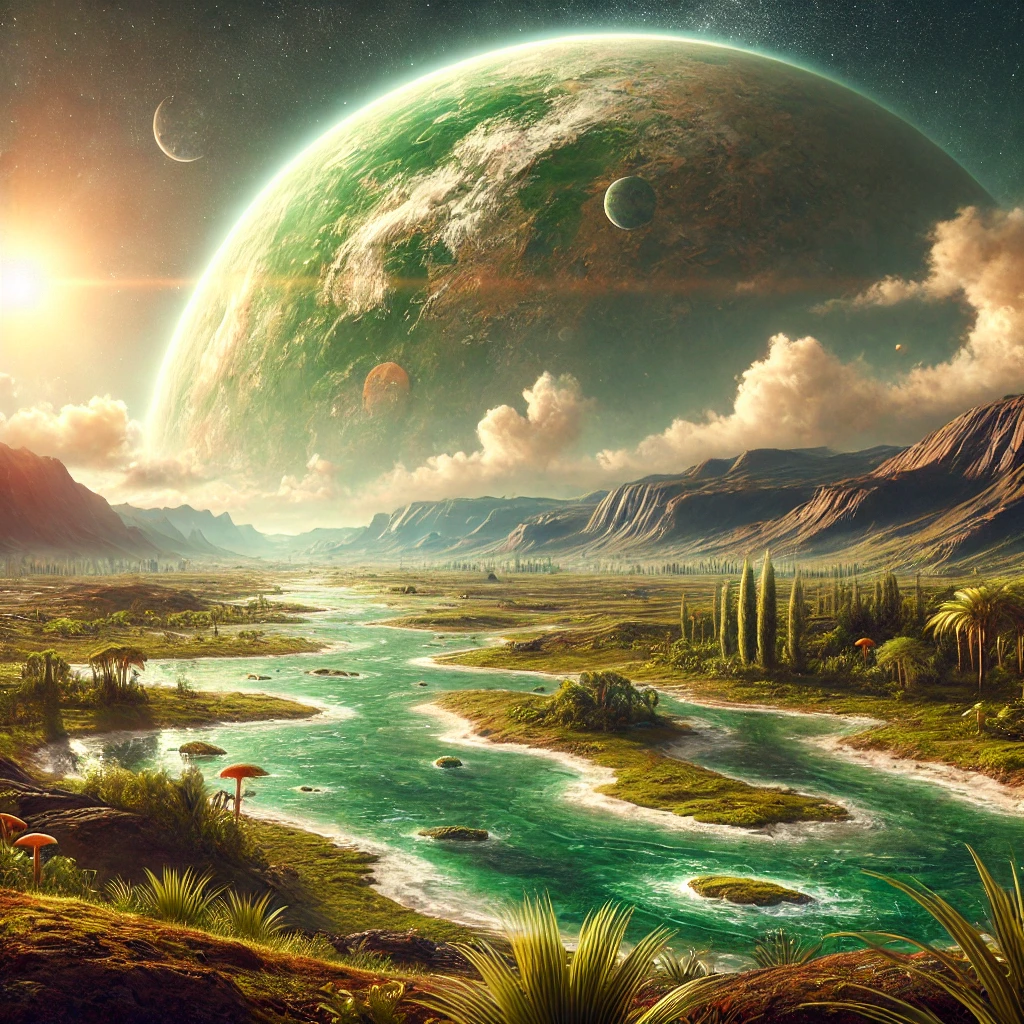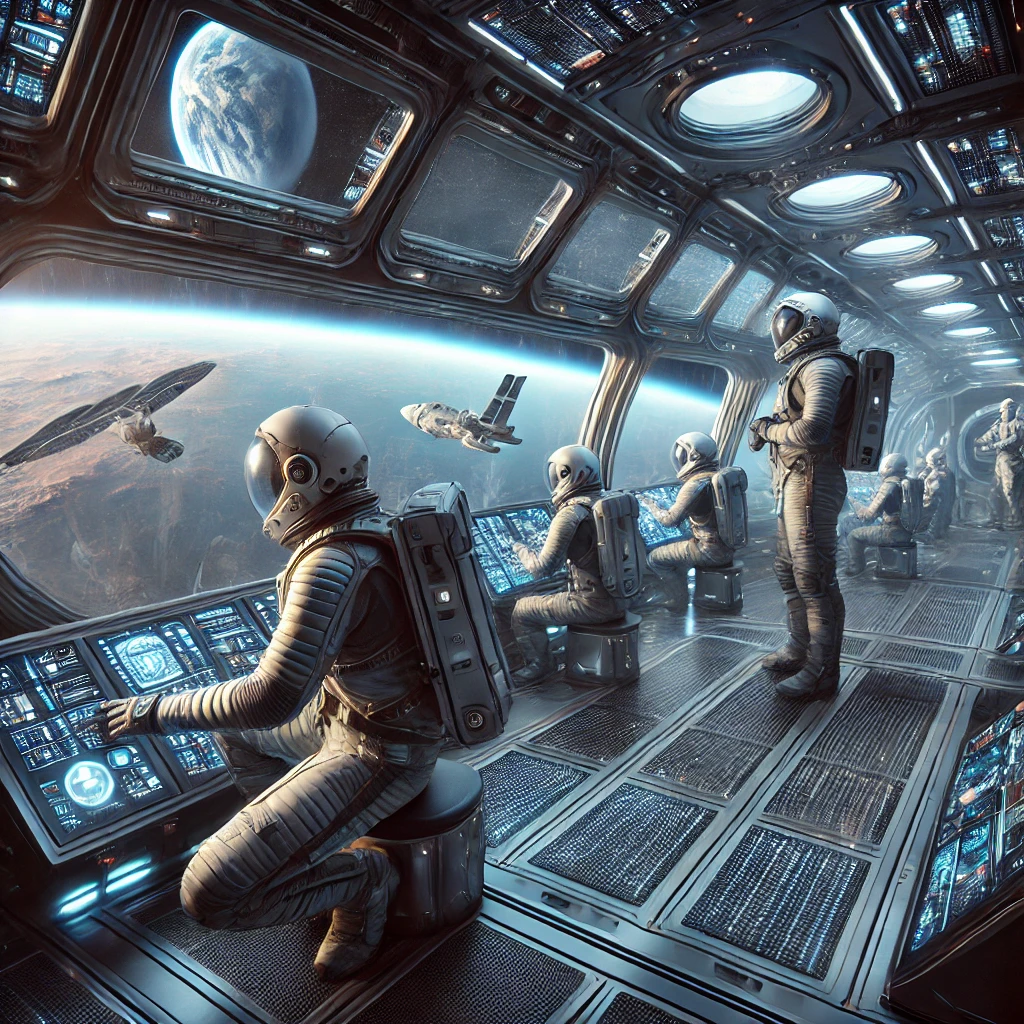Introduction
Picture a dusty, red world glowing in the night sky. This is the fourth planet from our Sun. Ancient people watched it closely. They named it after war gods because of its fiery color. For example, Romans called it Mars, their god of battle. Egyptians saw it as a symbol of strength. Today, we know this planet as a place of wonder. It’s a top target for scientists and dreamers alike. Its icy caps and huge mountains spark curiosity. Could it hold secrets about life? This guide explores the planet’s features, air, past missions, and chances for life. We’ll keep it simple and fun for everyone.
The planet sits about 228 million kilometers from the Sun. It’s smaller than Earth, with a width of 6,792 kilometers. A year there lasts 687 Earth days. However, a day, called a sol, is just 24.6 hours. The red color comes from iron oxide, or rust, covering the ground. For instance, dust storms spread this rust everywhere. The planet has ice caps at both poles. These caps, made of water and frozen carbon dioxide, change with the seasons. The surface has giant volcanoes and canyons, unlike anything on Earth.
People have long been fascinated by this world. In the 1800s, some thought they saw canals through telescopes. This led to stories of alien cities. Books like War of the Worlds imagined invaders from there. Later, we learned there were no canals. Instead, the planet has dry riverbeds and signs of old water. Therefore, it might have been wet long ago. Now, we send robots to explore it. We dream of humans walking there someday. This guide will show why this red world matters so much.

Physical Features
The red planet’s surface is like a giant adventure park. It has mountains, valleys, and craters galore. For example, the biggest volcano in the solar system sits here. Called Olympus Mons, it towers 22 kilometers high. That’s three times taller than Mount Everest! Its base is 600 kilometers wide, covering an area like Arizona. Long ago, lava flowed gently, building this giant. Other volcanoes, like those in the Tharsis area, also mark the landscape. These show the planet was once alive with fiery activity.
Another stunning feature is a massive canyon system. Known as Valles Marineris, it stretches 4,000 kilometers long. That’s a quarter of the planet’s girth! It’s up to 11 kilometers глубокий, dwarfing Earth’s Grand Canyon. The canyon formed when the crust stretched and cracked. Later, wind and water carved it deeper. Meanwhile, vast flat areas, like Utopia Planitia, spread across the north. These plains, smoothed by ancient floods, feel like endless deserts.
Craters cover much of the surface, signs of old space rock hits. One, Hellas Planitia, is 2,300 kilometers wide. It’s 9 kilometers deep, among the biggest craters anywhere. The poles have ice caps, too. The northern one, Planum Boreum, is mostly water ice. The southern one, Planum Australe, mixes water and dry ice. In summer, they shrink, revealing colorful layers. These layers hold clues to past climates.
Inside, the planet has a crust, mantle, and core. The crust is about 50 kilometers thick. The mantle, now quiet, once fueled volcanoes. The core, made of iron, is small and inactive. As a result, there’s no strong magnetic field. This affects the air, making it thin. Gravity is only 38% of Earth’s, so you’d feel lighter there. For instance, a 100-pound person would weigh just 38 pounds.
The surface tells a story of water. Dry riverbeds and lakebeds hint at wet times. Clays, formed in water, are found everywhere. Billions of years ago, the planet might have had rivers. Today, it’s a cold desert, but its beauty stuns. From volcanoes to craters, the red planet is a geological gem.

Atmosphere and Weather
The air on the red planet is very different from Earth’s. It’s mostly carbon dioxide, about 95%. There’s a bit of nitrogen and argon, too. However, it’s super thin, with pressure less than 1% of Earth’s. This makes the planet chilly, averaging -60°C. On a warm day, the equator might hit 20°C. At night, it can drop to -140°C. For example, you’d need a thick suit to stay warm.
Dust storms are a big deal here. They can cover the whole planet sometimes. In 2018, a huge storm blocked sunlight for months. Smaller twisters, called dust devils, spin across the ground. They leave dark trails, like scribbles. The thin air carries fine dust, shaping the weather. Meanwhile, seasons change a lot because the orbit is oval-shaped. Southern summers are short and hot; northern ones are longer and cooler.
The ice caps affect the weather, too. In winter, carbon dioxide freezes, making them bigger. In summer, it turns to gas, shrinking them. This shift stirs up winds across the planet. Water ice hides under the surface, especially in middle areas. Scientists found it using radar from orbit. For instance, there might be frozen lakes underground.
Long ago, the planet lost much of its air. Without a magnetic field, solar winds blew it away. This left the planet dry. However, signs of old lakes suggest thicker air once existed. The planet’s weather is tough for humans. Dust could jam machines, and cold would test equipment. Rovers like Curiosity measure wind and dust daily. Orbiters watch air changes from above. Understanding the planet’s weather helps plan future trips.
The red planet’s air holds secrets. It shows how the world changed over time. Though harsh, it’s a key to the past.

Exploration Adventures
People have studied the red planet for ages, first with telescopes. In the 1960s, spacecraft changed everything. NASA’s Mariner 4 flew by in 1965, snapping blurry pictures. Then, Mariner 9 orbited the planet in 1971. It mapped volcanoes and canyons, amazing scientists. The Soviet Union tried, too, but their probes often failed.
In 1976, NASA’s Viking 1 and 2 landed successfully. They took color photos of the rocky ground. Viking 1 sat in a flat plain, Chryse Planitia. Viking 2 landed farther north, spotting frost. Both tested soil and weather. For example, they found hints of past water. These missions made the planet feel closer.
The 1990s brought more action. Mars Pathfinder landed in 1997 with Sojourner, a tiny rover. It rolled around, checking rocks. Mars Global Surveyor orbited, making detailed maps. In 2003, NASA sent Spirit and Opportunity. They found signs of ancient water. Opportunity lasted 15 years, a record! Spirit explored a crater, finding volcanic clues.
Curiosity landed in 2012, a high-tech explorer. It roams Gale Crater, drilling rocks. It found signs of an old lake. In 2021, Perseverance arrived at Jezero Crater. It hunts for life clues and collects rocks. Its helicopter, Ingenuity, flew first on the planet. These missions keep teaching us more.
Other countries joined the fun. Europe’s Mars Express orbited in 2003, studying air. India’s Mangalyaan arrived in 2014, a low-cost win. China’s Tianwen-1 landed Zhurong in 2021. The UAE sent an orbiter, Hope, to watch weather. Meanwhile, NASA and Europe plan to bring rocks back by the 2030s. Private companies, like SpaceX, dream of human towns there. Each mission builds on past ones, revealing the planet’s story.

Search for Life
Could the red planet have life? This question excites everyone. Long ago, it might have been a good home. Rovers found old riverbeds and lakebeds. For instance, Gale Crater was a lake 3.5 billion years ago. Jezero Crater had a river delta. These spots could have hosted tiny microbes. Clays, needing water to form, are all over the surface.
Scientists found organic molecules, life’s building blocks. Curiosity spotted them in rocks. These don’t prove life, but they’re promising. Methane gas sometimes spikes in the air. On Earth, microbes make methane. Here, it might be from rocks or life. Nobody knows yet. Therefore, it’s a big mystery.
Water ice lies under the ground. Radar found liquid lakes beneath the south pole. On Earth, microbes live in icy places. Maybe they do here, too, safe from radiation. The surface is harsh, with no air to block rays. However, underground might be cozier.
Past missions, like Viking, looked for life. Their tests showed odd results, likely from chemicals, not bugs. Now, we study if the planet could support life. Perseverance grabs rocks for Earth labs to check. If life existed, we might find signs. For example, fossil microbes could hide in those rocks.
Humans visiting could mess things up. We must keep special areas clean. Future bases need careful planning. Finding life would change how we see the universe. Even if the planet is empty, it teaches us about other worlds. The search keeps us curious.

Leave a Reply